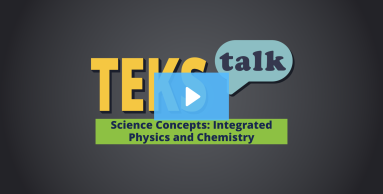- Science
- Grade 9
- Science concepts
IPC.6.D

Knowledge and Skills Statement
The further explanation is designed to be a resource for educators that helps them better understand the topic their students are learning. Further explanations may be written at a more complex level than would be expected for students at the grade level.
Some other examples that students may be familiar with include heat transfer within weather systems through convection by wind. In living systems such as an organism, heat can be transferred through conduction and convection between molecules. Mechanical systems such as microwaves or medical imaging systems transfer heat through radiation, and vehicles transfer thermal energy through friction and convection of coolant.
Research
Olsen, Emily, Tofel-Grehl, Colby, and Ball, Doug. "The Temperature-Sensing Lunchbox: A Modeling and Design Experience." Science Scope 42, no. 1 (2023):47-52. doi.10.2505/4/ss18_042_01_47.
Summary: This article describes a project called The Temperature-Sensing Lunchbox, which provides teachers with an opportunity to teach electricity and circuitry as students build a working model of thermal energy transfer. The Temperature-Sensing Lunchbox can be taught as part of a larger electricity and circuitry curriculum or as a standalone project focused on thermal energy transfer.
Research
Bauer, Christopher & Chan, Julia. (2023). "Windows on the Inquiry Classroom: A Pedagogic Field Laboratory for Exploring Teaching and Learning of Heat, Temperature, and Energy." Journal of College Science Teaching. 50. 6-13. https://www.nsta.org/journal-college-science-teaching/journal-college-science-teaching-julyaugust-2021/windows-inquiry.
Summary: The described course addresses the perception, movement, creation, and application of the concepts of heat and temperature, and the historical development of these ideas, created by the Fire and Ice Pedagogic Field Laboratory. The Fire and Ice Pedagogic Field Laboratory offers a source of materials and ideas for teaching about energy, an authentic example of inquiry teaching and learning, a resource for professional development, and a database for research.
